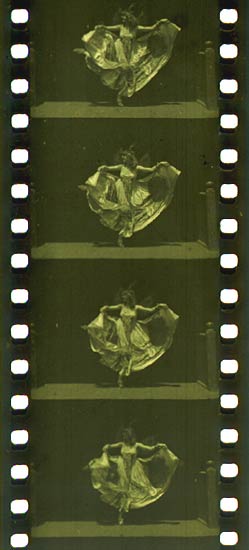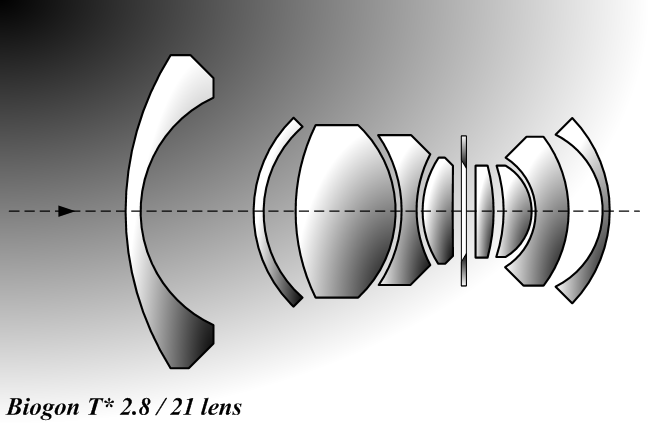|
Jupiter (lens)
The Jupiter (Russian: Юпитер, "Jupiter") series of lenses are Russian camera lenses made by various manufacturers in the former Soviet Union. They were made to fit many camera types of the time, from pre-WWII rangefinders to almost modern SLRs. They are copied from Zeiss pre-WWII designs with incremental improvements, such as coatings, introduced during production. The majority of them are based on Zeiss Sonnar optical scheme, but that's not a rule. Jupiter-3 The Jupiter-3 lens is derived from Zeiss Sonnar optical design. It has seven elements in three groups. This lens is the fastest Jupiter lens, having a maximum aperture of f/1.5. The focal length of this lens is 50mm, sometimes also expressed as 5cm. It was made for two different camera mounts, the Leica thread mount used on Zorki, FED, and some other Soviet rangefinders, and the Contax mount used on Kiev rangefinders. The latter one can be used on all Contax rangefinders, with the former ''usually'' needing to ... [...More Info...] [...Related Items...] OR: [Wikipedia] [Google] [Baidu] |
Russia
Russia, or the Russian Federation, is a country spanning Eastern Europe and North Asia. It is the list of countries and dependencies by area, largest country in the world, and extends across Time in Russia, eleven time zones, sharing Borders of Russia, land borders with fourteen countries. Russia is the List of European countries by population, most populous country in Europe and the List of countries and dependencies by population, ninth-most populous country in the world. It is a Urbanization by sovereign state, highly urbanised country, with sixteen of its urban areas having more than 1 million inhabitants. Moscow, the List of metropolitan areas in Europe, most populous metropolitan area in Europe, is the capital and List of cities and towns in Russia by population, largest city of Russia, while Saint Petersburg is its second-largest city and Society and culture in Saint Petersburg, cultural centre. Human settlement on the territory of modern Russia dates back to the ... [...More Info...] [...Related Items...] OR: [Wikipedia] [Google] [Baidu] |
M42 Lens Mount
The M42 lens mount is a screw thread mounting standard for attaching lenses to 35 mm cameras, primarily single-lens reflex models. It is more accurately known as the M42 × 1 mm standard, which means that it is a metric screw thread of 42 mm diameter and 1 mm thread pitch. (The M42 lens mount should not be confused with the T-mount, which shares the 42 mm throat diameter, but differs by having a 0.75 mm thread pitch.) It was first used by the East German brands VEB Zeiss Ikon in the Contax S of 1949, and KW in the Praktica of the same year. VEB Zeiss Ikon and KW were merged into the Pentacon brand in 1959, along with several other East German camera makers. M42 thread mount cameras first became well known under the Praktica brand, and thus the M42 mount is known as the Praktica thread mount.The M42 mount is sometimes referred to as a "P" thread. See, e.g., Since there were no proprietary elements to the M42 mount, many other manufacturers ... [...More Info...] [...Related Items...] OR: [Wikipedia] [Google] [Baidu] |
Film Stock
Film stock is an analog medium that is used for recording motion pictures or animation. It is recorded on by a movie camera, developed, edited, and projected onto a screen using a movie projector. It is a strip or sheet of transparent plastic film base coated on one side with a gelatin emulsion containing microscopically small light-sensitive silver halide crystals. The sizes and other characteristics of the crystals determine the sensitivity, contrast and resolution of the film.Karlheinz Keller et al. "Photography" in Ullmann's Encyclopedia of Industrial Chemistry, 2005, Wiley-VCH, Weinheim. The emulsion will gradually darken if left exposed to light, but the process is too slow and incomplete to be of any practical use. Instead, a very short exposure to the image formed by a camera lens is used to produce only a very slight chemical change, proportional to the amount of light absorbed by each crystal. This creates an invisible latent image in the emulsion, which ... [...More Info...] [...Related Items...] OR: [Wikipedia] [Google] [Baidu] |
8 Mm Film
8 mm film is a motion picture film format in which the film strip is wide. It exists in two main versions – the original standard 8 mm film, also known as regular 8 mm, and Super 8. Although both standard 8 mm and Super 8 are 8 mm wide, Super 8 has a larger image area because of its smaller and more widely spaced perforations. There are also two other varieties of Super 8 – Single 8 mm and Straight-8 – that require different cameras but produce a final film with the same dimensions. Standard 8 The standard 8 mm (also known as regular 8 or double 8) film format was developed by the Eastman Kodak company during the Great Depression and released to the market in 1932 to create a home movie format that was less expensive than 16 mm. Double 8 spools actually contain a 16 mm film with twice as many perforations along each edge as normal 16 mm film; on its first pass through the camera, the film is exposed only al ... [...More Info...] [...Related Items...] OR: [Wikipedia] [Google] [Baidu] |
T-mount
The T-mount is a standard lens mount for cameras and other optical assemblies. The usual T-mount is a screw mount using a male 42×0.75 (42 mm diameter, 0.75 mm thread pitch) metric thread on the lens with a flange focal distance of 55 mm and a mating female 42mm thread on a camera adapter or other optical component. This thread form is referred to as T-thread. (This should not be confused with the M42 lens mount which is also 42 mm diameter, but has a 1 mm thread pitch. The T-thread is sometimes described as "M42×0.75," which is the usual manner in which to describe a metric thread.) The "T" is said to stand for Tamron or Taisei, a Japanese manufacturer that released in 1957 the first of a line of aftermarket camera lenses that fit 35 mm SLR cameras built by various manufacturers using their universal ''T-mount''. On the first model, the mini T-mount used a M37×0.75 thread; Tamron's canonical M42×0.75 T-thread didn't appear on the market until ... [...More Info...] [...Related Items...] OR: [Wikipedia] [Google] [Baidu] |
Zeiss Biogon
Biogon is the brand name of Carl Zeiss for a series of photographic camera lenses, first introduced in 1934. Biogons are typically wide-angle lenses. History ''Biogon'' (I), 1934 File:Bertele-Zeiss Biogon (1934).svg, Zeiss ''Biogon'' by Bertele (1934), from US 2,084,309 File:Bertele US2549159A (Aviotar, 1947).svg, Wild ''Aviotar'' by Bertele (1947), from US 2,549,159 File:Jupiter-12 (Contax-Kiev lens mount).JPG, KMZ ''Jupiter-12'' lens The first ''Biogon'' lens (2.8 / 3.5 cm, an asymmetric design featuring seven elements in four groups) was designed in 1934 by Ludwig Bertele while he was working for Zeiss, as a modification of his earlier '' Sonnar'' design (1929). The ''Biogon'' was assigned to Zeiss Ikon Dresden and marketed with the Contax rangefinder camera. It was produced by Carl Zeiss starting in approximately 1937, first in Jena, then a redesigned version was built in Oberkochen. Bertele would go on to reuse the design for the Wild ''Aviotar''. After ... [...More Info...] [...Related Items...] OR: [Wikipedia] [Google] [Baidu] |
M42 Mount
The M42 lens mount is a screw thread mounting standard for attaching lenses to 35 mm cameras, primarily single-lens reflex models. It is more accurately known as the M42 × 1 mm standard, which means that it is a metric screw thread of 42 mm diameter and 1 mm thread pitch. (The M42 lens mount should not be confused with the T-mount, which shares the 42 mm throat diameter, but differs by having a 0.75 mm thread pitch.) It was first used by the East German brands VEB Zeiss Ikon in the Contax S of 1949, and KW in the Praktica of the same year. VEB Zeiss Ikon and KW were merged into the Pentacon brand in 1959, along with several other East German camera makers. M42 thread mount cameras first became well known under the Praktica brand, and thus the M42 mount is known as the Praktica thread mount.The M42 mount is sometimes referred to as a "P" thread. See, e.g., Since there were no proprietary elements to the M42 mount, many other manufacturers used it ... [...More Info...] [...Related Items...] OR: [Wikipedia] [Google] [Baidu] |
Leica M
The Leica M mount is a camera lens mount introduced in 1954 with the Leica M3, and a range of lenses. It has been used on all the Leica M-series cameras and certain accessories (e.g. Visoflex reflex viewing attachment) up to the current film Leica M-A and digital Leica M11 cameras. This lens mount has also been used by Epson, Ricoh, Minolta, Konica, Cosina Voigtländer, Rollei, Carl Zeiss AG and Rollei Fototechnic on some of their cameras. Overview The Leica M mount was introduced in 1954 at that year's Photokina show, with the Leica M3 as its first camera. The 'M' stands for ''Messsucher'' or rangefinder in German. This new camera abandoned the M39 lens mount in favour of a new bayonet mount. The bayonet mount allowed lenses to be changed more quickly and made the fitting more secure. Other innovations introduced by the M3 included a single window for the viewfinder (for composition) and the rangefinder (for focusing). With a double-stroke film advance lever (later models hav ... [...More Info...] [...Related Items...] OR: [Wikipedia] [Google] [Baidu] |





